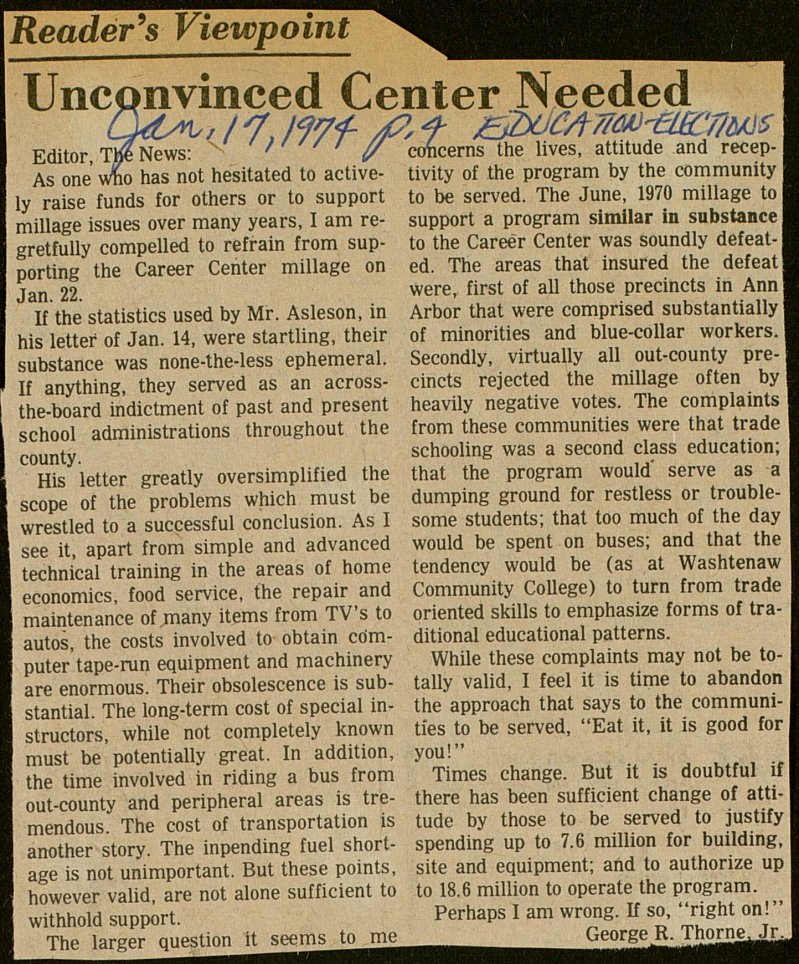Unconvinced Center Needed

Editor, T News: ' '.'"" As one wno has not hesitated to actively raise funds for others or to support millage issues over many years, I am regretfully compelled to refrain from supporting the Career Center millage on Jan. 22. If the statistics used by Mr. Asleson, in his letter of Jan. 14, were startling, their substance was none-the-less ephemeral. If anything, they served as an acrossthe-board indictment of past and present school administrations throughout the county. His letter greatly oversimplified the scope of the problems which must be wrestled to a successful conclusión. As I see it, apart from simple and advanced technical training in the areas of home economics, food service, the repair and maintenance of many items from TV's to autos, the costs involved to obtain computer tape-run equipment and machinery are enormous. Their obsolescence is substantial. The long-term cost of special instructors, while not completely known must be potentially great. In addition, the time involved in riding a bus from out-county and peripheral areas is tremendous. The cost of transportation is another story. The inpending fuel shortage is not unimportant. But these points, however valid, are not alone sufficient to withhold support. The larger question it seems to me concerns the Uves, attitude and receptivity of the program by the community to be served. The June, 1970 millage to support a program similar in substancel to the Careèr Center was soundly 1 ed. The areas that insured the defeat I were, first of all those precincts in Ann Arbor that were comprised substantially of minorities and blue-collar workers. Secondly, virtually all out-county pre-! cincts rejected the millage of ten by heavily negative votes. The complaints from these communities were that trade schooling was a second class education; that the program would' serve as a dumping ground for restless or troublesome students; that too niuch of the day would be spent on buses; and that the tendency would be (as at Washtenaw Community College) to turn from trade oriented skills to emphasize forms of traditional educational patterns. While these complaints may not be totally valid, I feel it is time to abandon the approach that says to the communities to be served, "Eat it, it is good for you!" Times change. But it is doubtful if there has been sufficient change of attitude by those to be served to justify spending up to 7.6 million for building, site and equipment; and to authorize up to 18.6 million to opérate the program. Perhaps I am wrong. If so, "right on!"
Article
Subjects
Education - Elections
Editorial
Ann Arbor News
Old News
Jr.
George R. Thorne